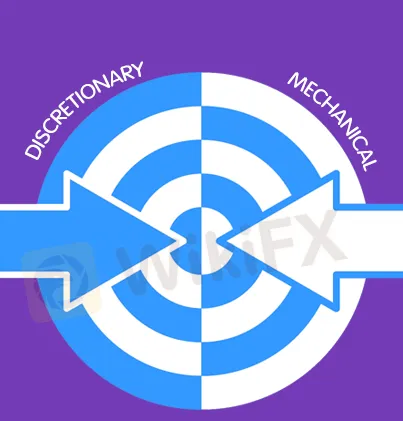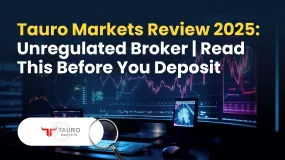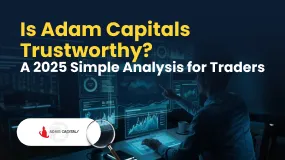What Is a Hybrid Market?
Abstract:A hybrid market is an exchange where traders may conduct deals using both automated trading tools and conventional floor brokers. The New York Stock Exchange is the most well-known example of a hybrid market in the United States (NYSE).
Market participants in hybrid markets can select between fully automated electronic exchange systems and human floor brokers who execute deals on the actual trading floor. Despite the fact that both techniques have merits and limitations, there has been a recent trend toward completely computerized order fulfillment.

The advantage of hiring floor brokers is that they may use human judgment in the way and time in which they enter deals, despite the fact that they are slower and more expensive than entirely computerized systems. In general, they are only used by large institutional clients and a select few high-net-worth individuals. In order to make deals that are delicate in nature, these customers may need to rely on the human judgment and experience of a floor broker.
Investors placing big orders, for example, may wish to keep their order from becoming public information so that other investors do not attempt to front-run the transaction. Floor brokers could be able to help with such a deal by scouring their network of institutional customers for possible counterparties.
Clients may also rely on floor brokers' skills to spread out their trade executions across time in order to avoid impacting the price of the securities while the deal is being completed. For example, if an investor desires to acquire a large number of shares in a sparsely traded firm, putting the full purchase through a single order may cause the price to rise before all of the shares can be purchased, raising the transaction's overall cost. A floor broker may be trusted to keep a close eye on this transaction and issue buy orders progressively to keep the overall cost low.
Floor brokers, on the other hand, are generally unnecessary or impractical for retail investors. These investors will seldom be worried about impacting the market price of the assets they acquire because of their minimal transaction amounts.
A Hybrid Market in the Real World
For the majority of its existence, the NYSE, one of the world's oldest and most prestigious stock exchanges, relied on human trade brokers on its physical trading floor. The NYSE, on the other hand, made practically all of its listed equities available for electronic trading in January 2007. 1
Although these equities can still be traded on the trading floor by brokers, consumers can now choose for electronic executions. In practice, today's market participants place the great majority of transactions electronically, with human brokers mostly representing huge institutional customers. Many exchanges throughout the world have now completely abolished their physical trading floors, claiming the greater efficiency of electronic trading as the reason.
Read more

Tauro Markets Review 2025: Unregulated Broker | Read This Before You Deposit
Tauro Markets claims to be a global forex and CFD broker, but upon closer examination of its operations, we find serious warning signs that every potential trader needs to be aware of. While they offer the well-known MT4 platform and various trading options, these advantages are completely overshadowed by one major problem: they have no real financial regulation at all. This Tauro Markets review gives you a complete analysis, focusing on the real risks and what they claim to offer, so you can make a smart decision. Our conclusion is simple: because this broker has no regulation, your capital is in serious danger, and anyone thinking about opening an account should be extremely careful.

Is Adam Capitals Trustworthy? A 2025 Simple Analysis for Traders
Traders often ask, "Is Adam Capitals trustworthy?" and "Is Adam Capitals reliable?". A valid concern, as all of us would prioritize capital safety. This analysis gets straight to the answer. The biggest problem with Adam Capitals is that the broker works without any proper government oversight. This one fact alone creates a big risk that you cannot ignore. While the broker advertises features like the MT5 platform and many different trading options, not having regulation is a major problem. This article looks at its regulatory status, trading conditions, account features, and what users have reported to give you the complete picture.

Is Adam Capitals Safe? A Complete Look at Risks, Rules, and User Worries
This article gives you a detailed Adam Capitals safety review to answer one important question: Can you trust this broker? To be honest, our research shows that Adam Capitals has a high risk level. The main reason for this judgment is that it's an unregulated broker working from an offshore location, specifically Saint Lucia. This one fact is more important than all other parts of its service. This lack of government oversight is a serious problem that puts client money in danger. Industry ratings show this reality, giving the broker poor scores consistently. Throughout this report, we will carefully break down the proof supporting this conclusion. We will look at its regulatory status (or lack of it), study how it operates, and include real-world user worries to give you a complete understanding of the risks involved when trading through Adam Capitals.

Adam Capitals Regulation: A Complete Guide to Its Licensing and Safety Claims
When choosing a broker, every trader needs to ask one key question: Is my capital safe, and is this company legitimate? The question of Adam Capitals regulation is at the heart of this safety check. Based on public records from 2025, the clear answer is that Adam Capitals does not have a valid financial license from any major, trusted regulatory authority. The company, called AdamFxCapitals Ltd, is registered as an International Business Company (IBC) in Saint Vincent and the Grenadines (SVG). However, this registration is not equivalent to financial regulation. As a result, the broker is classified as "High potential risk" and receives low trust scores from industry verification services. This guide will break down the broker's regulatory claims, look at how it operates and what platform it uses, and explain the risks for potential investors. The goal is to give you clear, fact-based information to help you decide if your capital would be safe with them.
WikiFX Broker
Latest News
The "Arbitrage" Accusation: How Winning Trades Turn Into Account Reviews at ACY Securities
QuickTrade Review: Multiple Reports of Account Freezes and Login Failures by Users
Tag Markets Exposed: Withdrawal Issues, Inflated Spreads & Market Manipulation Concerns
Inside the BSN Scandal: Bank Officer Stole Over RM11 Million from Victims
Nearly RM1mil Gone: The Investment Pitch She Should’ve Ignored
【Inside the Elite Committee】 Talk with Lance
【WikiEXPO Global Expert Interviews】Alexandra Will: The Next Chapter of Risk Management
Tauro Markets Regulatory Review 2025: A Complete Guide to Its Licensing and Safety
Tauro Markets Regulatory Review 2025: A Complete Guide to Its Licensing and Safety
Voices of the Golden Insight Award Jury | Jack H, Regional Manager of CBCX
Rate Calc


